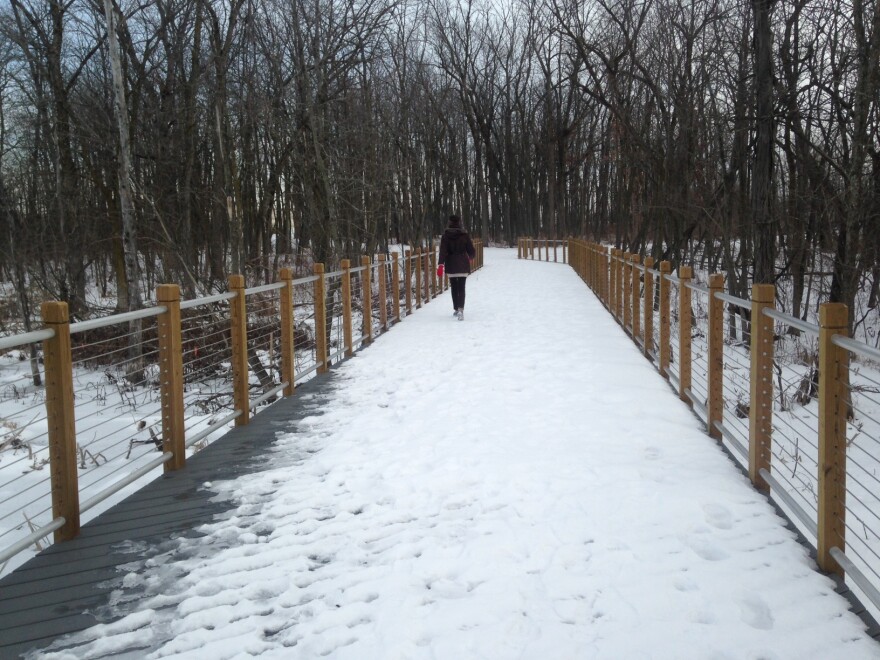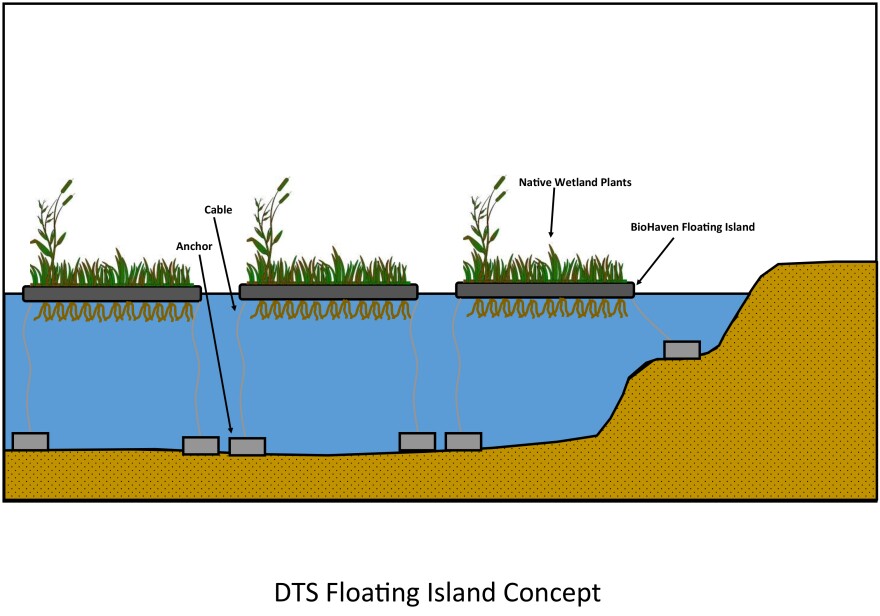Oak Creek’s new civic center abounds with sustainable features – natural light pouring into the buildings, LED lights and geothermal heating and cooling. But what has most excited city’s environmental engineer, Susan Winnen, about the new Drexel Town Square development is the wetland.
Located next to the former industrial site, this parcel of land survived decades of intense activity. The 18 acres have now been christened Emerald Preserve.

It includes a paved path and boardwalks, called Dale Richards Trail – named for a former mayor. Winnen says teams added at least 80,000 native plants throughout the preserve.
“One of the things we tried to emphasize is habitat for pollinators, because a lot of people aren’t yet aware, but for instance Monarch butterflies are becoming extremely rare. Their populations have crashed. Part of that is because they don’t have access to milkweed, which is the only plant that caterpillars will eat,” she says.
When spring comes, Winnen says a sea of caterpillar food and inviting plants will sway and attract honey bees and other native pollinators.

As the vision of Oak Creek’s new city center hub began to crystallize, inspiration struck because of the area’s spongy nature, she says.
Winnen's specialty is storm water management, so she knew Oak Creek had a chance to raise its innovation bar.
“I thought of what this should be; and when I bounced it off of management and elected officials, they also saw the potential and it just went from there,” Winnen says.
When rain used to fall, about 80 percent of the massive industrial site drained into a large storm sewer. Today the parcel seeps into the wetland, which cleanses the water.

Winnen admits, it took heaps of human-induced hydrology to redirect the storm water.
“On the northeast corner there are three bioswales. We have the pervious pavement and there’s a lot of pervious pavement in the roads. So between all of those we get enough treatment to remove what they called the suspended solids,” Winnen says. Those are pollutants.
“The water from the entire site comes to this pond, or this pond to the north and from here, it discharges into the wetland,” Winnen says.
Oak Creek’s wetland can now handle more than 11 million gallons of rain.

Winnen says among the partners pivotal to the project was the U.S. Fish and Wildlife Service. The agency helped streamline the permitting process.
"Additionally, and perhaps as importantly, all agreed that showing the water holding capacity of a large natural wetland was important and would benefit the public recognizing how important wetland function is to flood prevention," she says.

Everything from frogs and turtles to a green heron and mink have been spotted on the preserve.
“And when you come in here, especially during autumn there are just tons of birds, eating all the seeds,” Winnen says.

Another attraction coming in spring are three floating islands. A team will anchor them in the largest storm water detention pond.
Winnen says they’re meant to do more than provide attractive habitat. “One of the challenges of an urban environment is fertilizer. If you get too much nutrients into wetlands you get algae. So the floating wetland islands, they have vegetation and as the roots grow down, they’ll actually will take nutrients out of the water and use them to grow the plants,” she says.
No matter how the islands fare, Winnen calls the project a success.
She says city leaders and developers alike embraced the environmental and monetary value of restoring a wetland in a community that's re-imagining itself.




